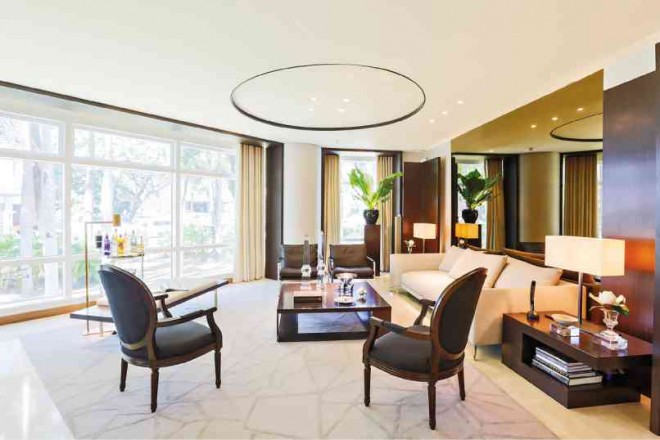
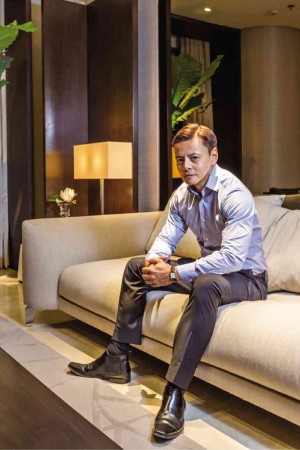
What is the ultimate in condominium luxury?
Amenities and services aside, it is space imbued with quiet elegance, subdued colors and organic textures, says architect and interior designer J. Antonio Mendoza.
It’s what he has done for Two Roxas Triangle’s three-bedroom “show flat” (the British term for a mock-up condominium that has been decorated for buyers to view).
As the market for high-end vertical living expands, developer Roxas Land Corp.—a joint venture between Ayala Land Inc., Hongkong Land Ltd. and Bank of the Philippine Islands—is launching Two Roxas Triangle on Thursday.
The 52-story condominium is being constructed just behind One Roxas Triangle on Makati’s prime location of Cruzada Street and Paseo de Roxas.
Consisting of 182 flats, Two Roxas Triangle follows the design of American architectural firm Skidmore, Owings and Merrill (SOM) and is built by local counterpart Pimentel, Rodriguez, Simbulan and partners.
The turnover of Two Roxas Triangle starts in the first quarter of 2019.
As an ultra-luxury residence, Two Roxas Triangle provides three-bedroom and four-bedroom flats, ranging from 302 square meters to 633 sq m.
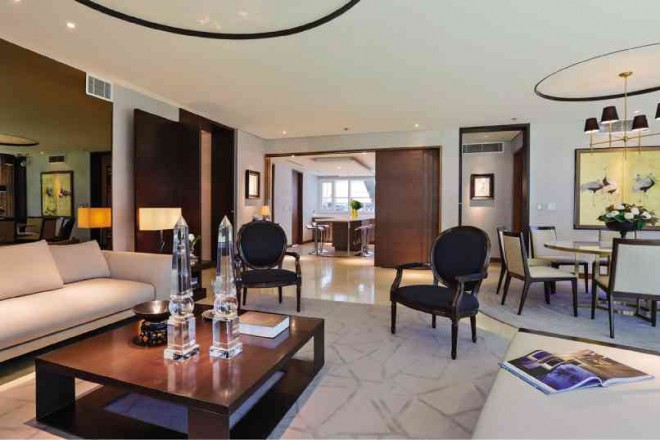
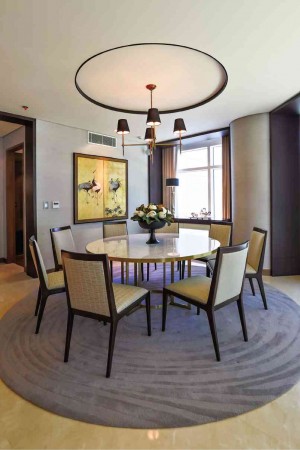
With a price range from P47.2 million to P168.1 million, it has fabulous deliverables such as crema marfil or cream marble from Spain for the flooring and bathroom, a generous walk-in closet in the master bedroom, a gourmet kitchen fitted by SieMatic with Sub-Zero refrigerator and Miele range and oven.
Understated elegance
Mendoza has been a consultant of Ayala Land Inc. since 2001. He has designed model flats for such projects as Montgomery Place and Legazpi Park, and the lobbies of Aston and Two Serendra, to name a few.
In creating the Two Roxas Triangle show flat, he said he bore in mind that it had to be a testament to Ayala Land’s leadership in the real estate market while being reflective of Hongkong Land’s international aesthetic.
“The market is targeted toward affluent but low-key professionals, ranging from established couples to early nesters and retirees,” says Mendoza.
On the importance of a showcase in marketing condominium, he explains, “Not everybody can read floor plans. People say yes, but they don’t understand them. They can’t imagine how the condominium looks unless they see it. With an empty space, everything looks smaller. Once you fix it up, you realize how much space you’ve got.”
A show flat—commonly referred to as a “model unit”—presents buyers with possibilities and a sense of scale, a design element which shows the relationship between the size of an object or person to the space.
“If you just present an open space, buyers won’t know if they can put a rectangular table and how many it can seat,” says Mendoza.
“Designers are here to help with the process. With this flat, you can put a king-size bed, a table for eight or 10 if they set some furniture aside. The two bedrooms are of the same size. I showed that one can hold a king-size bed while the other has twin beds,” he adds.
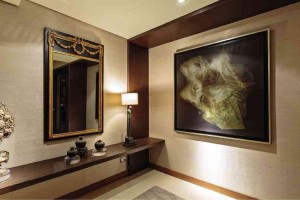

The show flat is a mock-up of a 350-sq-m corner condominium, which tends to be a tough sell.
By convention, corner flats are more premium because they have more windows for natural light and views. Away from the elevator and other neighbors, these spaces are quieter. However, depending on the building, they tend to have irregular cuts.
Mendoza bares his design signature—warmth, understated luxury and organic but unexpected contrasts of textures and shapes. His style is largely influenced by his architectural training.
“We are trained to design interior architecture—the partitioning, the detailing such as the cornices, door and cabinet design, skirting and coves; wall finishes, and the layout. We just enhance the space with furniture. We don’t mask anything,” says Mendoza, whose work shows that the space between beautiful objects is just as important in creating balance.
Structure and the linear interpretation of how a space functions are vital to his design. These spill over into other features in his design: coves replace chandeliers; a long, horizontal gmelina headboard ties in a leather writing desk, the boy’s bed and leather folding tray table.
Architraves, those moldings around windows, visually minimize big structural columns. These architectural solutions create harmony on potential disorder.
To create the feeling of a cocoon, bronze mirrors with side sheets frame the living room while a shagreen and bronze-trimmed panel envelopes the bed in the master bedroom.
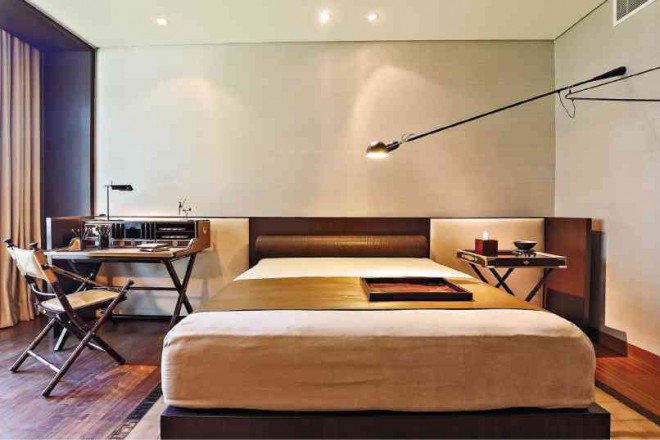
The color palette is restricted neutrals—soft gray and beige, browns, black and a touch of gold leaf.
Contrasting styles
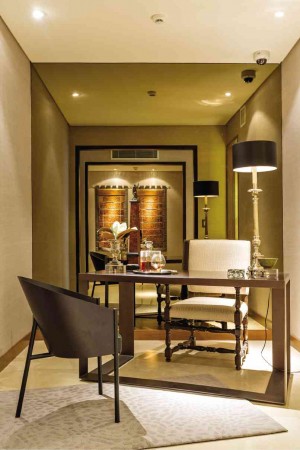
The crux of Mendoza’s style is his attention to details. Eighty percent of the furniture and accessories was customized by local suppliers. The architect-designer’s choice of surfaces for the furniture and furnishing creates pleasure in a subtle manner.
For a tactile quality, he worked with local artisans to produce abaca wallpaper in greige, a combination of gray and beige which unifies all the rooms.
In the boy’s room, a leather folding chair and patchwork area rug by Prizmic and Brill lend luxury.
The girl’s room is a cozy arrangement of fabric headboard, jute accessory boxes, and a distressed wooden drawer that mimics the veneer of an Armani cantilevered desk.
Mendoza contrasts the matte texture of the chairs made of gmelina, a sustainable wood, with the Carrara marble-topped table.
A classicist at heart, Mendoza mixes old and new. A 19th-century man’s writing desk is in the same bedroom as a Maxalto chair. He throws in his “monkey wrenches” such as an antique finial repurposed into a lamp and old Oriental porcelain to disrupt the modernity of the master bedroom.
In the living room, he mixes modern elements such as a glass bar trolley for flair, chrome and leather chairs by Walter Knoll, a Marcel Wanders sofa and a graphic carpet by Iñigo Elizalde with rounded, classical French chairs.
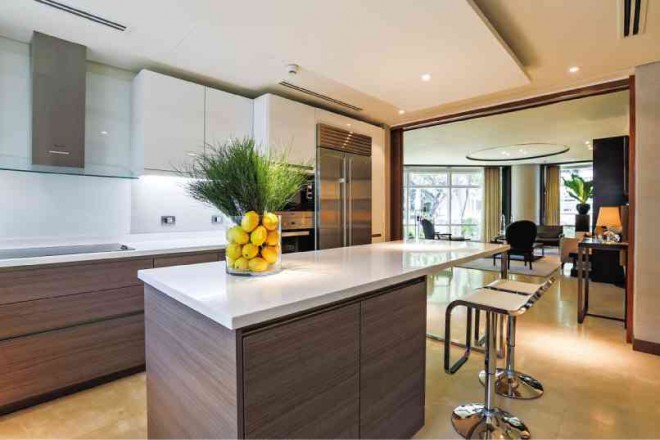
In the den, Mendoza arranges an iconic Philippe Starck Café Costes chair made of Philippine mahogany with a minimalist table; he set them off with an ornate antique church candelabra that has been made into a lamp.
On the foyer, the guest is welcomed by the striking contrast of an ornate trumeau, a French mirror by Betis Crafts, against Jaime Zobel de Ayala’s stark abstraction.
Mendoza attributes his timeless style to his extensive classical training at the University of Santo Tomas (UST). “Everything we learned had cornices, dados and wainscoting.”
He recalls traveling to Europe with designer Jonathan Matti when they were UST students. While chatting with foreign architecture students at the Louvre, Mendoza kept dropping names of classic French architects such as François Mansart who introduced Baroque architecture, and 19th-century urban planner Georges-Eugène Haussmann.
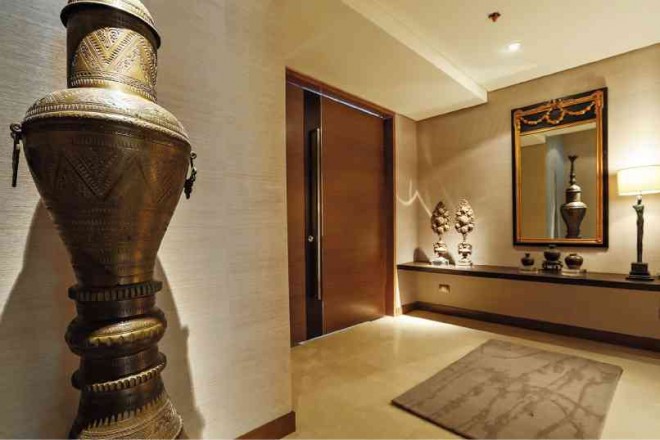
Their amazed acquaintances told Mendoza, “For someone so young, your ideas are so old.”
“When I came back, I became a modernist,” he says.
Mendoza didn’t learn about Richard Neutra, Renzo Piano, Starck and Richard Meier until he had graduated. But the classical aesthetic he learned from UST remains the foundation of his work.
“To become timeless and a modernist, you need a good command of classic order,” he points out.









































